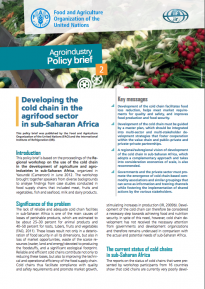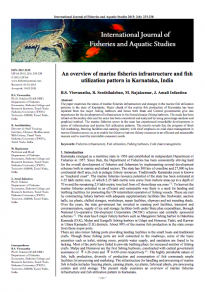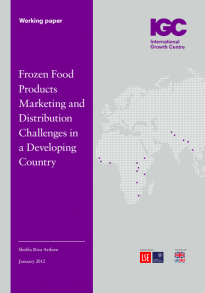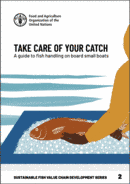Services and Infrastructure for Freezing
Key services and infrastructure for reducing food loss and waste (FLW) associated with freezing include:
- Processing facility which meets Global Health Program (GHP) standards
- Road and modern transport infrastructure
- Energy (electricity)
- Water
- Cold storage
- Food safety control
- Freezer equipment suppliers
- Refrigeration engineering and service providers
- Packaging/containers (e.g. cartons, polyethylene bags)
- Final product distributors
Investing in Cold Chain Development in Sub-Saharan Africa
Investing in Cold Chain Development in Sub-Saharan Africa
Value chain actors who are considering investing in cold chain development in sub-Saharan Africa face challenges related to:
- access to energy
- maintenance (shortage of qualified staff and spare parts)
- poor logistics arrangements
- weak organization and implementation of controls for compliance with standards
- relatively low traded volumes and weak organizational arrangements for value chain activities
The cost of a reliable cold chain is not economically sustainable unless production reaches a threshold in terms of volume and quality of products. Cold chains are also highly reliant on equipment maintenance, which requires qualified staff. However, the provision of training is feasible only when there are sufficient operating systems to justify investments in training and to ensure long-term employment.
Furthermore, key infrastructure and related services (electricity, transport, markets, etc.) should be upgraded to ensure that cold chain systems are effectively implemented and efficient. Incentives to promote investment and capacity building in key agrifood subsectors – support for land acquisition, private–public partnerships are also necessary.
Infrastructure Investment in Karnataka, India
Infrastructure Investment in Karnataka, India
Over the years, the state government of Karnataka, India has invested in creating port facilities, transport and communication, supply of ice and storage facilities both under State plan expenditure, through National Co-operative Development Corporation (NCDC) schemes and centrally sponsored schemes. About 90% of the marine fish production in the state comes from major ports. There are also minor fishing ports providing landing facilities to the small boats and traditional crafts. Though these fishing ports are well connected to the roadways, some of the basic amenities such as toilet, retiring room, potable water supply, and sanitation are found to be lacking. Malpe and Honnavar are the first fishing harbours, constructed with central government assistance. The highly perishable nature of fish, bulk production, diversity of production and consumption of fish commands ample facilities for processing and marketing. The infrastructure for handling and processing of marine fish in India includes freezing plants, canning plants, ice plants, fish meal plants, pre-processing centres and cold storage.
Key Publications
Developing the cold chain in the agrifood sector in sub-Saharan Africa Policy brief based on the proceedings of a Regional workshop on the use of the cold chain in the development of agriculture and agro industries in sub-Saharan Africa. | |
An overview of marine fisheries infrastructure and fish utilization pattern in Karnataka, India The paper examines the status of marine fisheries infrastructure and changes in the marine fish utilization patterns in Karnataka, India, including progress and developments which enable fishers to harvest in efficient and sustainable ways. | |
Frozen Food Products Marketing and Distribution Challenges in a Developing Country The aim of this case study is to understand the challenges the frozen food industry in a developing country like Pakistan has faced in the past, and is facing currently. |
More Resources
More Resources
31 October 2023














